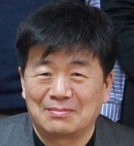
Seoul National University
Korea
Professor Sung-Gul Hong has been a Professor in the Department of Architecture and Architectural Engineering at Seoul National University, South Korea, since 1996. He graduated from Lehigh University in 1994, where he studied strut-and-tie models for bar development and anchorage. Professor Hong is a member of ACI and fib and is currently the national delegate of Korea for fib and a member of the editorial board of the Structural Concrete Journal of fib. He is an active member of fib involved in Committee 4.2.1 on the shear strength of beams and slabs. He authored more than 140 technical publications, including 60 refereed papers in international journals. He has been an expert on concrete plasticity and his papers on strut-and-tie models with their applications have been published in ACI Structural Journal and others. He has been working on both materials engineering and structural applications of ultra-high performance concrete (UHPC) for almost 10 years. He published more than 15 papers on UHPC materials in the Journal of Concrete and Cement Research and other materials journals as well as several papers in structural engineering topics about shear strength in structural journals with book chapters. He has extended UHPC application to seismic retrofit techniques by jacket-strengthening methods for beams, columns, and walls. For the new generation of UHPC, Professor Hong is investigating the properties of UHPC composites with carbon nanotubes, water glass, and various fillers with low thermal conductivities for smart UHPC such as two-stage 3D printing concrete.
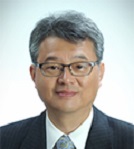
Yeungnam University
Korea
Jae-Hoon Lee is President of the Korea Concrete Institute (KCI) and a Professor in the Department of Civil Engineering at the Yeungnam University, Republic of Korea. He received his BSc and MSc degrees from Seoul National University, Korea, and his PhD degree from the University of Wisconsin- Madison, USA. He worked for Samsung Engineering and Construction Company as a licensed structural engineer in Korea and a licensed professional engineer in the United States before moving to the faculty position. He has led committees and working groups of technical activities for concrete structures. His activities as a committee chair include Structural Concrete Design Code Committee of the KCI, Concrete Bridge Design Code Committee of the Korean Institute of Bridge and Structural Engineers (KIBSE), Structural Concrete Committee of the Korean Society of Civil Engineers (KSCE), Civil Structure Seismic Design Committee of the Earthquake Engineering Society of Korea (EESK), and Concrete Standard Committee of the Korea Construction Standards Center. And also he participated in Korean Railroad Bridge Design Code Committee, Korean Harbor Design Code Committee, and Korean Nuclear Power Plant Design Code Committee (KEPIC Code, Korea Electric Power Industry). His researches, especially for the seismic design of concrete bridges and for flexural members under compression, have greatly contributed to the revision of Korean Bridge Design Code and Korean Structural Concrete Design Code. Another code provisions based on his research include ultimate strain and compressive stress distribution of concrete, compressive stress-strain model of confined concrete, material resistance factors of concrete and reinforcement for flexure and compression members, ductility-based shear strength design formula, design equation of required confining steel for seismic design of bridge columns, and reinforcement details of hollow circular and rectangular bridge columns. And also he has been leading a research team of utilizing high strength reinforcement for 8 years, and provided many information to the code revision committees of KCI, ACI 349 and 359 (Nuclear Structure) and the ACI 318-R (High Strength Reinforcement). As an educator, he gave lectures on reinforced concrete, prestressed concrete, and seismic design. And also he wrote two textbooks on reinforced concrete and prestressed concrete.
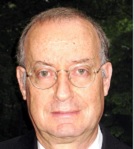
University of Michigan
USA
Antoine E. Naaman is Professor Emeritus in the Department of Civil and Environmental Engineering at the University of Michigan, Ann Arbor, USA. He holds a Diploma Engineer from ECP in Paris, and MS and Ph.D. degrees in Civil Engineering from the Massachusetts Institute of Technology, Cambridge, USA. Dr. Naaman's research studies have led to more than 350 publications in technical journals and symposia proceedings worldwide. He is also the author of three textbooks (Prestressed Concrete, Fiber Reinforced Concrete, and Ferrocement), four chapters in handbooks, and editor or co-editor of fourteen books. Professor Naaman has received several professional awards, including the ASCE T.Y. Lin Award twice, the PCI Martin P. Korn Award twice, the UM Research Excellence Award, Germany's Alexander von Humboldt Award, the Hwa Ying Foundation for Culture and Education award ( P.R. China), the URB Scholar Award of the American University of Beirut, the Japan Concrete Institute best paper award (2004), Korea Concrete Institute paper of the year award (2010), ACI Chester P. Siess Award for Excellence in Structural Research (2011), PCI Distinguished Educator award, and CTE-Italy 's Grandi Personalita dell Ingegneria award. He is a Fellow and Honorary Member of the American Concrete Institute (ACI), Fellow of the American Society of Civil Engineers (ASCE), Fellow of the Precast/Prestressed Concrete Institute (PCI), and Fellow, founding member and past president of the International Ferrocement Society (IFS).
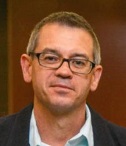
Florida Department of Transportation
USA
Steven Nolan has been a registered Professional Engineer in Florida since 2001. He received his engineering degree from the University of New South Wales, Sydney Australia in 1989, then worked for a heavy civil contractor (Leighton Contractors Pty Ltd) for several years before emigrating to the USA in 1996 and joining the Florida Department of Transportation. He currently leads the implementation of advanced materials for bridge applications within the FDOT State Structures Design Office. These materials currently include 10 technologies of interest including UHPC, FRC, and various BFRP, GFRP & CFRP composite reinforcements which Steve coordinates as Chair of the statewide Structural Advance Materials Technical Advisory Group (SAMTAG). His 22 years with FDOT includes in-house bridge design; Project Manager for several completed and ongoing structures research projects, a 2018-2020 FHWA STIC Grant; and development of many of the FDOT precast and prestressed concrete Design Standards. He is an active member of the Transportation Research Board's AFF80 Standing Committee on Structural FRP; the Bridge Engineering Institute's International Advisory Committee; fib-International Federation for Structural Concrete; and a reviewer for ASCE Journal of Composite Construction. He also provides technical support for FDOT members on AASHTO's T-6 (FRP Composites) and T-10 (Concrete Design) Committees on Structures and Bridges. Steve has co-authored and presented numerous papers on FRP and prestressed concrete related to bridges and coastal structures including most recently: BEI-2019; TRB 2018-2019; 2018 fib-Congress, ASCE-Florida, IALCCE, IBC; 2014-2015 ABC-UTC and 2015-2017 CAMX Conferences; and FDOT Symposium & Design Training Expo 2013-2019.
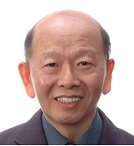
National University Of Singapore
Singapore
Professor TAN KIANG HWEE is a faculty member of the Department of Civil and Environmental Engineering at the National University of Singapore (NUS) since July 1981. He obtained his doctorate degree from the University of Tokyo, Japan in 1985. He specialises in the area of structural concrete and composites and has carried out extensive research on external prestressing, fibre-reinforced polymer (FRP) reinforcement, fibre-reinforced concrete, and sustainable concrete and construction. Professor Tan is a Fellow of the Institution of Engineers, Singapore (IES), Japan Concrete Institute (JCI) and Japan Society of Civil Engineers (JSCE). He is a member of editorial boards for several international journals, including ASCE Journal of Materials in Civil Engineering, ASCE Journal of Composites for Construction, Cement and Concrete Composites, JCI Journal of Advanced Concrete Technology, Science and Engineering of Composite Materials, and others. Currently, he serves as Chairman of Working Group on 'Singapore Standard for Design of Fibre Reinforced Concrete Structures'. He is a registered professional engineer and has also been a consultant in structural engineering and materials to several agencies in Singapore.
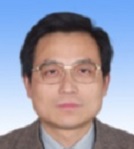
Tongji University
China
Dr. Weichen Xue is a Professor of Structural Engineering in Tongji University, China. He is also the Distinguished Professor of Chang Jiang Scholar, Ministry of Education of China. He received his doctoral degree from Southeast University, China, in 1995. Currently, he serves as vice president and secretary general of the Branch of Civil Engineering, Chinese Society for Composite Materials, Vice Chairman of the Academic Committee of the Chinese Architectural Society for Industrialization and Architecture, Vice Chairman of the Building Industrialization Branch of the China Survey and Design Association, and Deputy Director of the Comprehensive Pipeline and Underground Space Professional Committee of China Municipal Engineering Association. His main research interests lie in three distinct areas in structural engineering: a) Precast concrete structures, b) Prestressed concrete structures and c) FRP in civil engineering. So far, he has authored or co-authored over 200 publications, including more than twenty papers were published in ACI/ASCE journals. Prof. Xue serves as chair or co-chair of over twenty Chinese national, provincial and associational design codes.